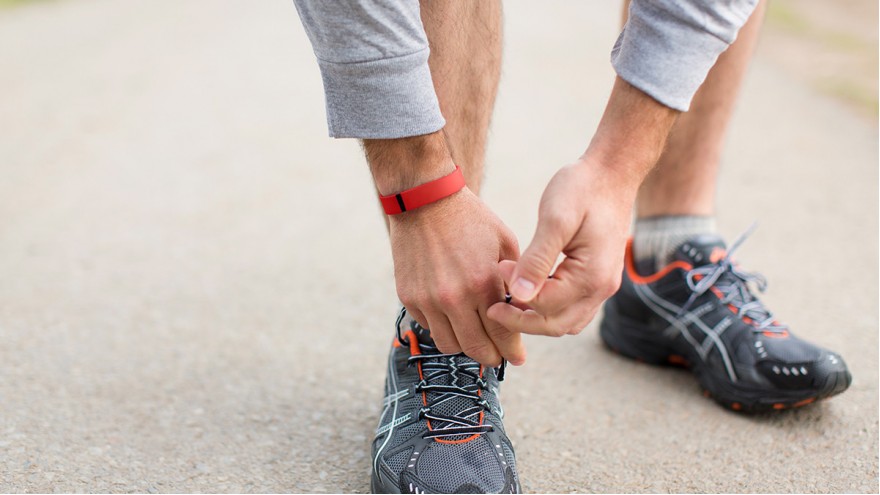Fitness Wearables Are Not Reaching The Right Users But They Could
Guest author Kerri McMaster is the co-founder and chief strategy officer for Performance Lab.
The promise of fitness wearables is their capacity to raise the population’s health and wellness, primarily by making users aware of their lack of activity or sleep. But, as it turns out, the main users of these devices are not the unfit people they’re supposedly designed for.
Recent polling by Ipsos found that only 11 percent of Americans over 54 intend to purchase a wearable device in the next 12 months, and a separate study by NPD Group concluded that fewer than a quarter of fitness tracker users were over 54. The same research showed that 41 percent of fitness tracker users earned more than $100,000 per year, and that 35- to 54-year-olds (largely healthy, but starting to worry) were the dominant demographic.
So the main users of these gadgets are in the “three W" category: the worried, wealthy, and well, not necessarily the unhealthy users, for whom the technology could make the biggest difference. The problem—and the solution—lies in the approach gadget makers take.
Data & Social Features Are Not Enough
When it came to quantified health, the data was going to save us. But consumers, outside of an elite few, are overwhelmed by all that information. They don’t know what to do with it all.
In the many years I ran a health and fitness consultancy, I lost count of the people who walked in wanting to know what the numbers from their sports watches actually meant. To make the data story even worse, PWC recently found that a whopping 86 percent of consumers fear that wearable tech makes us more vulnerable to privacy and security breaches.
The other supposed “hero” was going to be positive social pressure. The proponents of this approach had us believing we’d share our outcomes with friends and family, and that would motivate us to meet goals. We would get excited to share our triumphs, and be inspired by our loved ones’ progress, they said.
PWC’s research debunks this as well. Fewer than one in four Americans is willing to share their health and fitness outcomes, and an even smaller proportion wants their friends to share with them. Just as holidaymakers on tropical beaches are disproportionately willing to share their photos, so it is the relatively fit and well who are willing to share their weight loss and personal best statistics. Our social feeds are flooded by the successes of those that don’t need social support, and Candy Crush invitations from those that do.
So how will we use wearables to deliver health benefits on a mass scale? If the target market doesn’t have the expertise to deal with mushrooming data, and they don’t tap into social reinforcement, what will it take to reach them?
Simply put, it will take results—and effective ways to get them.
Take The Steps To Smarter Fitness Devices
It’s common sense: When a person is rewarded for very specific behaviors, they will repeat those behaviors. Sounds simple, but none of the fitness wearables on the market today can do this well enough. Even if they could, they can't distinguish well enough between different types of activities, to discern which ones to reward.
Take fitness trackers and step counters, for example. There's a difference between "active steps" and "passive steps." Right now fitness trackers don’t make that distinction. Lazy trudging to the minibar in slippers count the same as steps in the fourth minute of a long hill climb.
Even worse: The other day, while I was sitting on the bus, I watched with bemusement as one of my fitness trackers—a leading brand (I test them all)—rapidly climbed over my goal of 10,000 steps. We had hit a particularly bumpy collection of suburban New Zealand roads, and my gadget attempted to quantify those motions.
Active steps—or purposeful activity to move toward a health goal—have enormous potential. They open the door to coaching and real-time behavioral change that can bend the curve for health outcomes. To do this properly we cannot just report disparate data streams. We have to bring them together, and put them in the context of recent history, medical history, and individual goals.
People may take more active steps, if they see just how “scientific" walking or running moves them toward their dream—whether that's weight loss, fitness, reduced blood pressure, or reduced cholesterol. I’m talking about generating meaningful statements within these bespoke workouts like:
- “Your last two walks were really similar in terms of effort output. If you want your weight loss to get back on track you need to add some new components to your workouts. So for today’s walk you’ll need to either go faster, go longer, or add a few more hills. I’ll let you know when you do any of these things.”
- “Kathy, you need to ease off your effort on this hill to moderate your exercise blood pressure.”
This is possible right now. Blood pressure, diabetes, obesity, and cardiovascular health can all be significantly ameliorated by scientific exercise, tailored to individual physiology, with coaching prompts responding to real-time monitoring of the environment and bodily reaction.
The key to success is partnership. Trusted companies that have an intimate understanding of their customers must collaborate with both sensor developers and health experts, who in turn should work closely with machine-learning specialists.
The outcome could play out faster than you think. With the expertise and the advances available to us, we have the jigsaw puzzles pieces in hand. Now, we just need to snap them together. That’s the only way that our picture of tech-driven health and wellness can fully form.
Lead photo courtesy of Fitbit





Comments